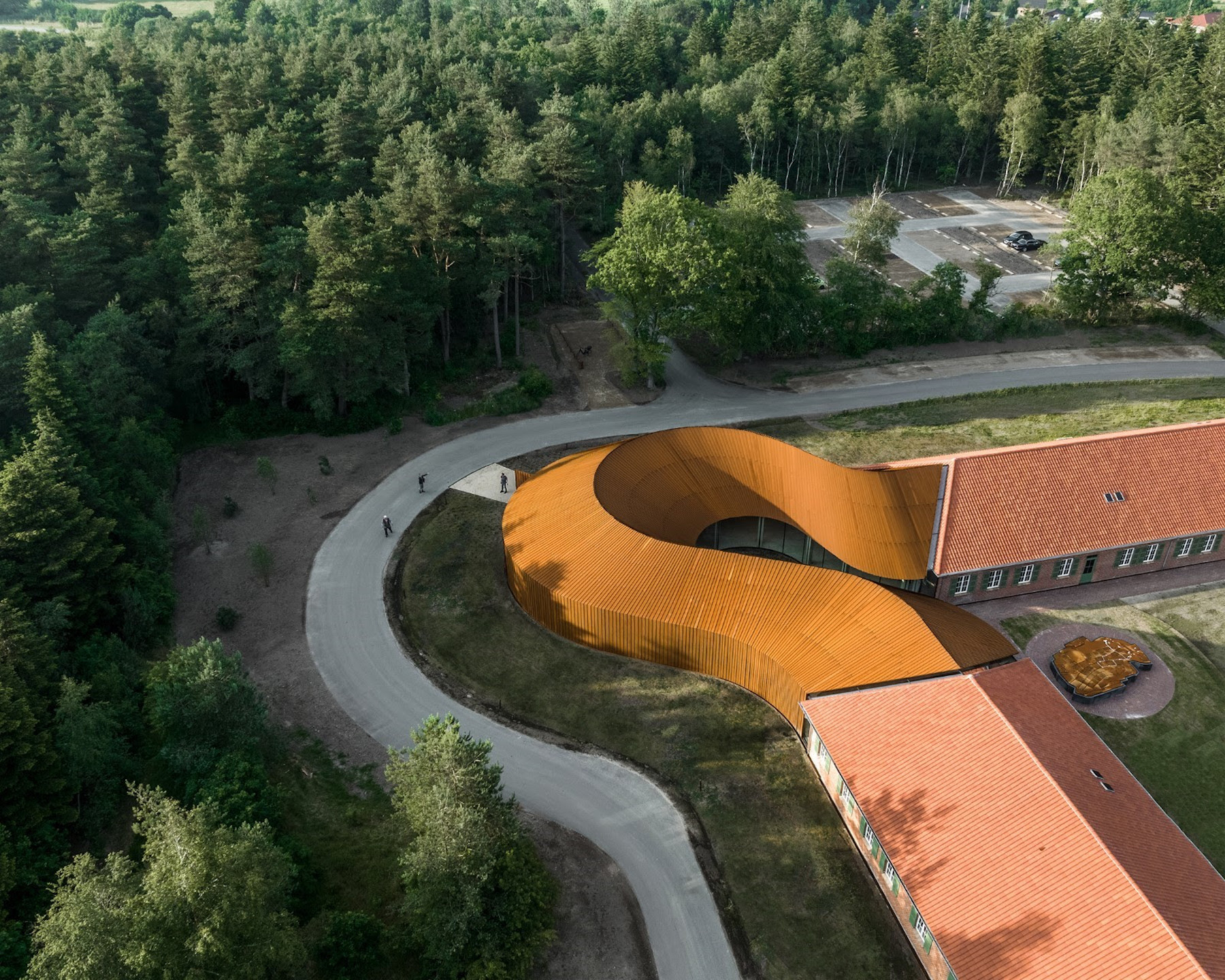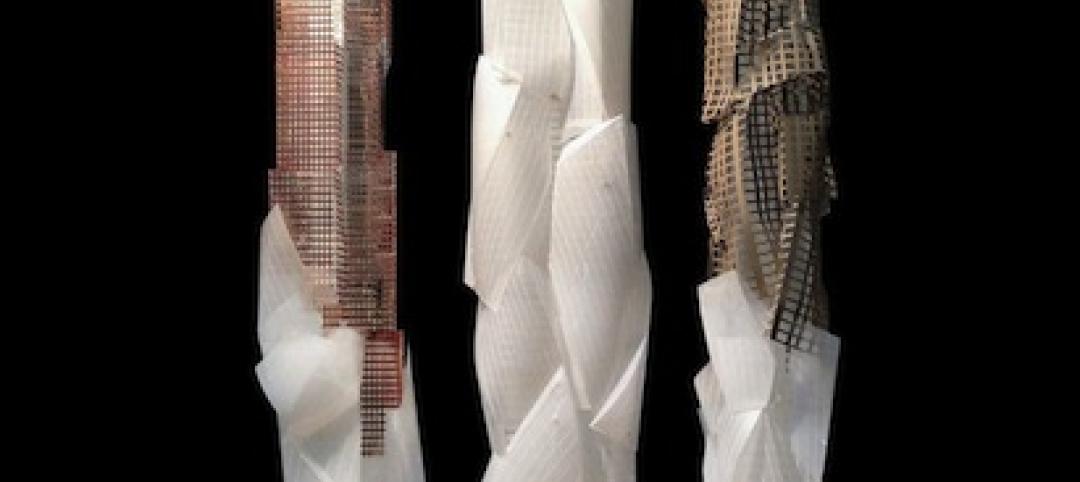Located on the site of Denmark’s largest World War II refugee camp, the new Refugee Museum of Denmark, FLUGT, tells the stories of refugees from the camp as well as refugees worldwide.
At 1,600 square meters (about 17,220 square feet), the museum was designed by BIG-Bjarke Ingels Group and exhibition designers Tinker Imagineers. Together, they adapted and extended one of the camp’s few remaining structures—a hospital—into the museum.
“FLUGT seeks to give a voice and a face to humans who have been forced to flee their homes and capture the universal challenges, emotions, and nuances shared by refugees then and today,” Claus Kjeld Jensen, museum director, said in a statement.
The former hospital comprises two long buildings. BIG connected the two structures by adding a soft curve-shaped volume, which serves as a welcoming structure and creates 500 square meters (about 5,380 square feet) of additional museum space. From the outside, the volume welcomes visitors into a seemingly closed entry hall. But inside, a floor-to-ceiling curved glass wall reveals a sheltered green courtyard and the forest, where the refugee camp used to be. From the entry hall, which functions as a lobby or a temporary exhibition space, guests continue to one of the museum wings.
The north wing’s exhibition area contains gallery spaces organized according to the hospital’s original flow. The south wing includes a flexible conference room, smaller exhibition spaces, cafe, and back-of-house functions.
“We went into this project with all our heart to address one of the world’s greatest challenges—how we welcome and care for our fellow world citizens when they are forced to flee,” Bjarke Ingels, founding partner, BIG, said in the statement.
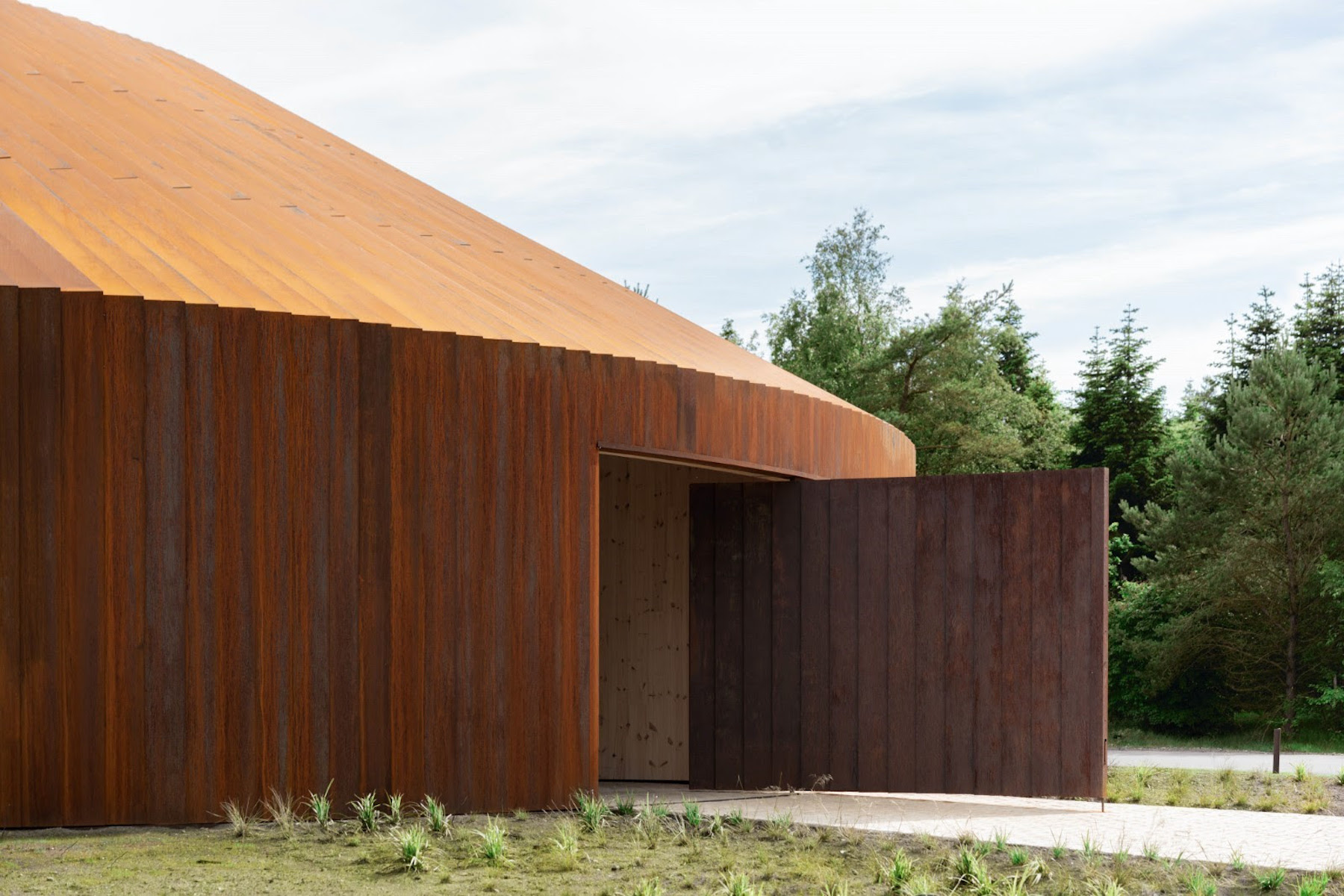
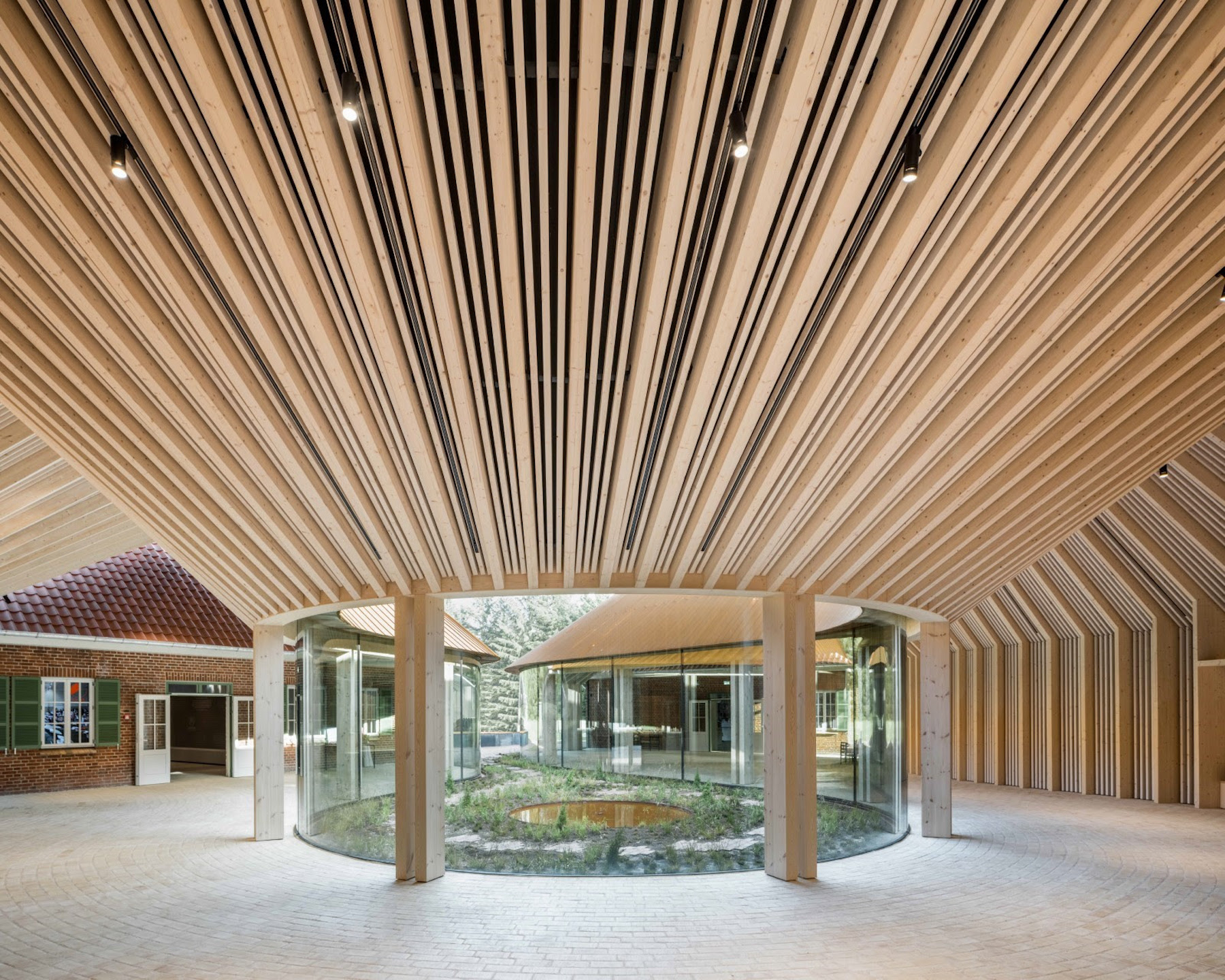
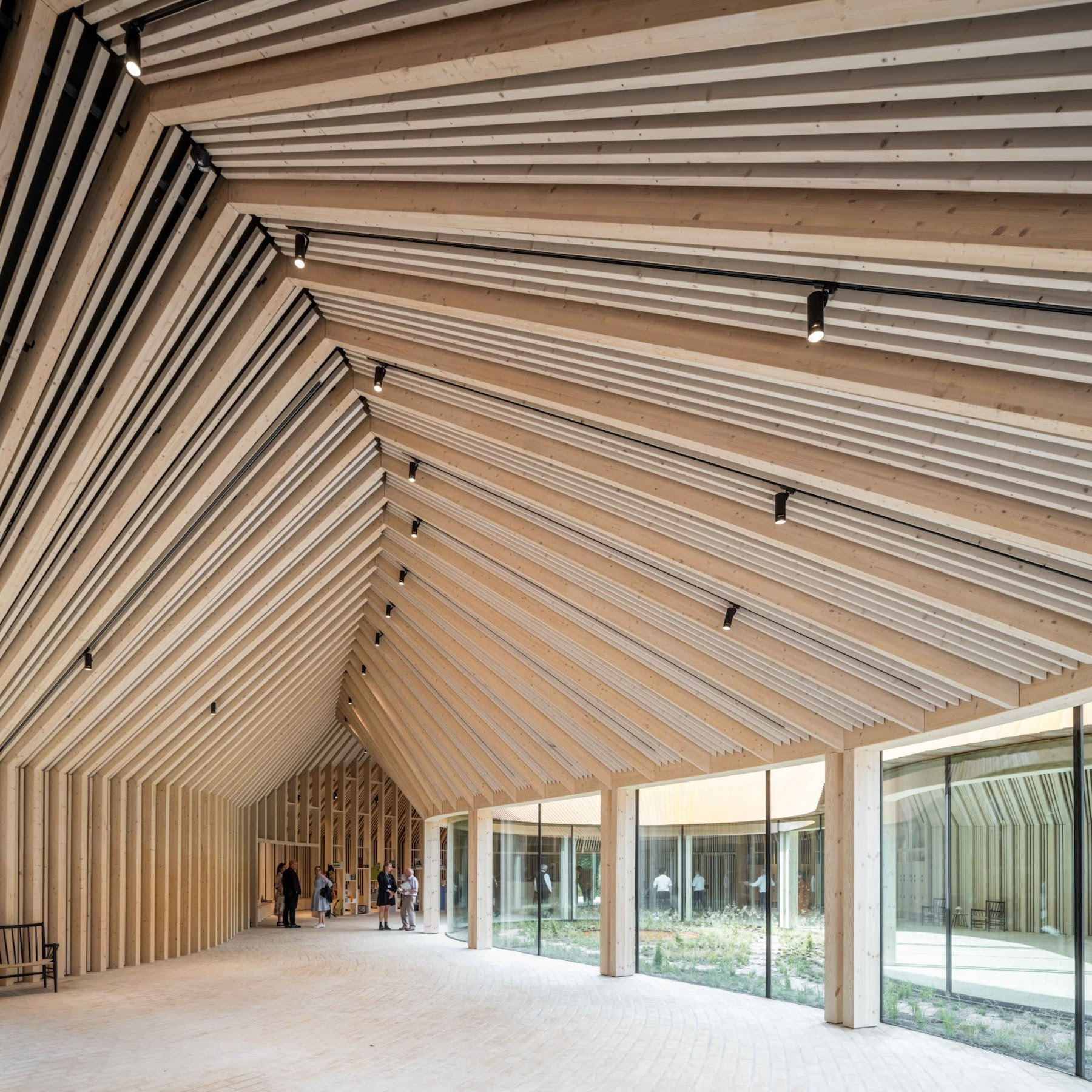
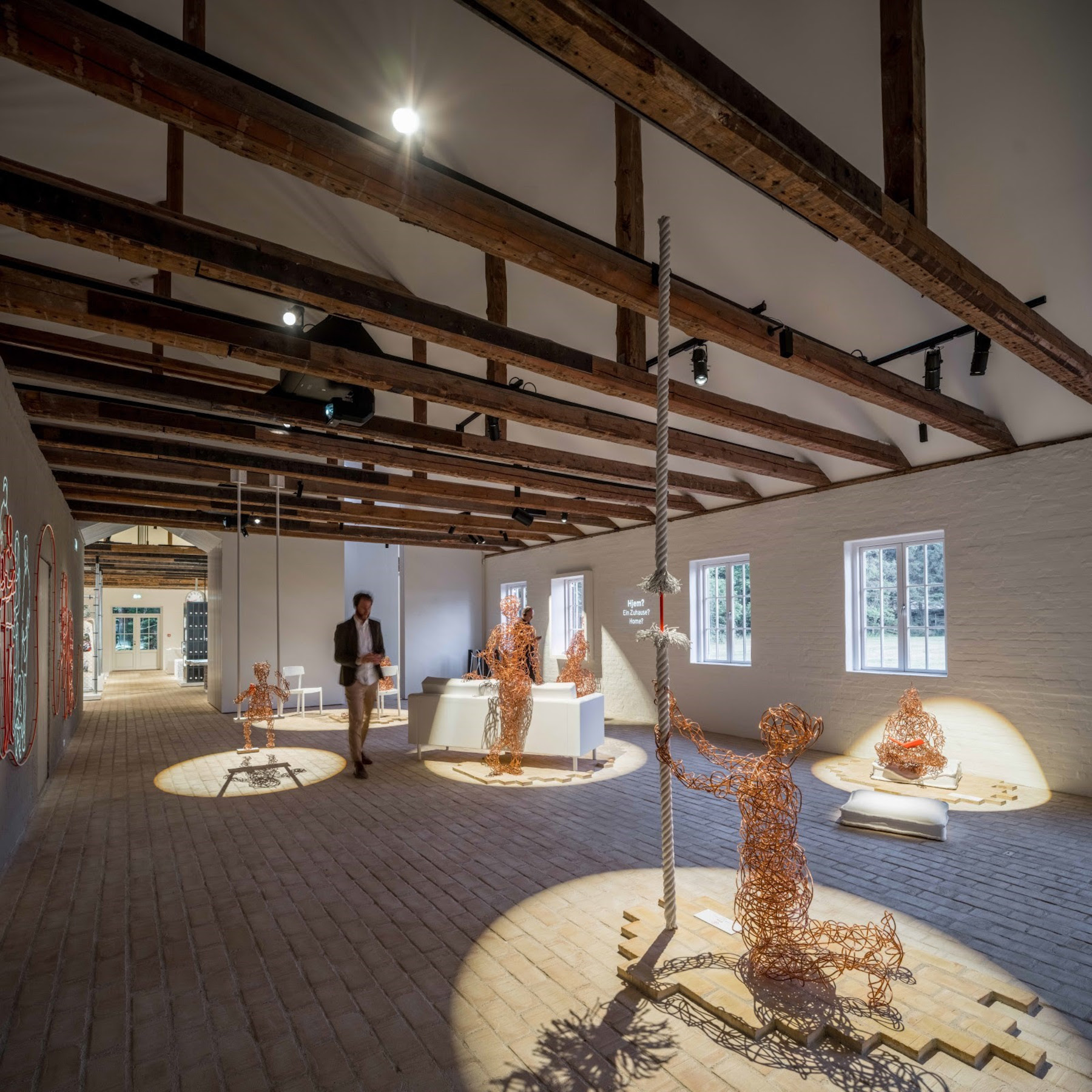
Related Stories
| Jul 29, 2013
2013 Giants 300 Report
The editors of Building Design+Construction magazine present the findings of the annual Giants 300 Report, which ranks the leading firms in the AEC industry.
| Jul 26, 2013
How biomimicry inspired the design of the San Francisco Museum at the Mint
When the city was founded in the 19th century, the San Francisco Bay’s edge and marshland area were just a few hundred feet from where the historic Old Mint building sits today. HOK's design team suggested a design idea that incorporates lessons from the local biome while creating new ways to collect and store water.
| Jul 22, 2013
Cultural Facility Report [2013 Giants 300 Report]
Building Design+Construction's rankings of design and construction firms with the most revenue from cultural facility projects, as reported in the 2013 Giants 300 Report.
| Jul 19, 2013
Reconstruction Sector Engineering Firms [2013 Giants 300 Report]
URS, STV, Wiss Janney Elstner top Building Design+Construction's 2013 ranking of the largest reconstruction engineering and engineering/architecture firms in the U.S.
| Jul 19, 2013
Reconstruction Sector Architecture Firms [2013 Giants 300 Report]
Stantec, HOK, HDR top Building Design+Construction's 2013 ranking of the largest reconstruction architecture and architecture/engineering firms in the U.S.
| Jul 19, 2013
Renovation, adaptive reuse stay strong, providing fertile ground for growth [2013 Giants 300 Report]
Increasingly, owners recognize that existing buildings represent a considerable resource in embodied energy, which can often be leveraged for lower front-end costs and a faster turnaround than new construction.
| Jul 2, 2013
LEED v4 gets green light, will launch this fall
The U.S. Green Building Council membership has voted to adopt LEED v4, the next update to the world’s premier green building rating system.
| Jul 1, 2013
Report: Global construction market to reach $15 trillion by 2025
A new report released today forecasts the volume of construction output will grow by more than 70% to $15 trillion worldwide by 2025.
| Jun 28, 2013
Building owners cite BIM/VDC as 'most exciting trend' in facilities management, says Mortenson report
A recent survey of more than 60 building owners and facility management professionals by Mortenson Construction shows that BIM/VDC is top of mind among owner professionals.
| Jun 25, 2013
Mirvish, Gehry revise plans for triad of Toronto towers
A trio of mixed-use towers planned for an urban redevelopment project in Toronto has been redesigned by planners David Mirvish and Frank Gehry. The plan was announced last October but has recently been substantially revised.


